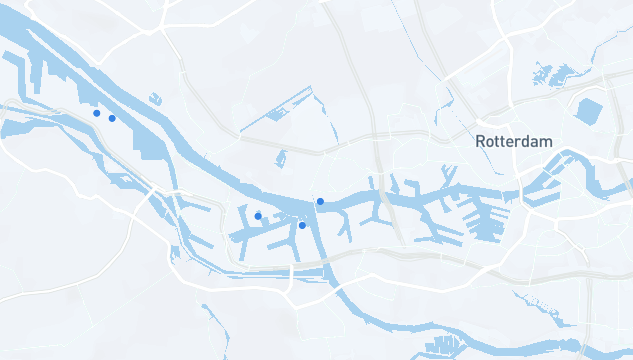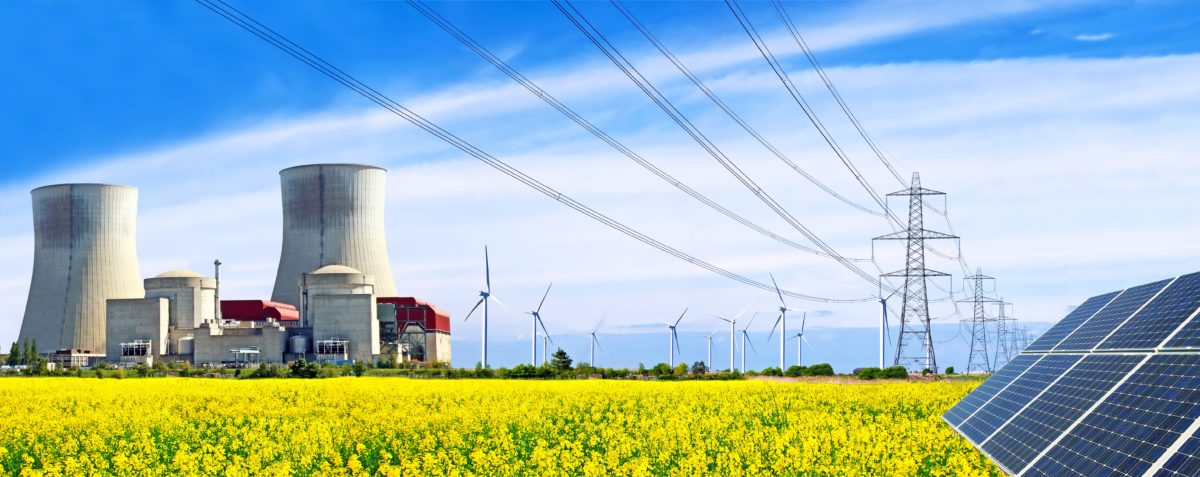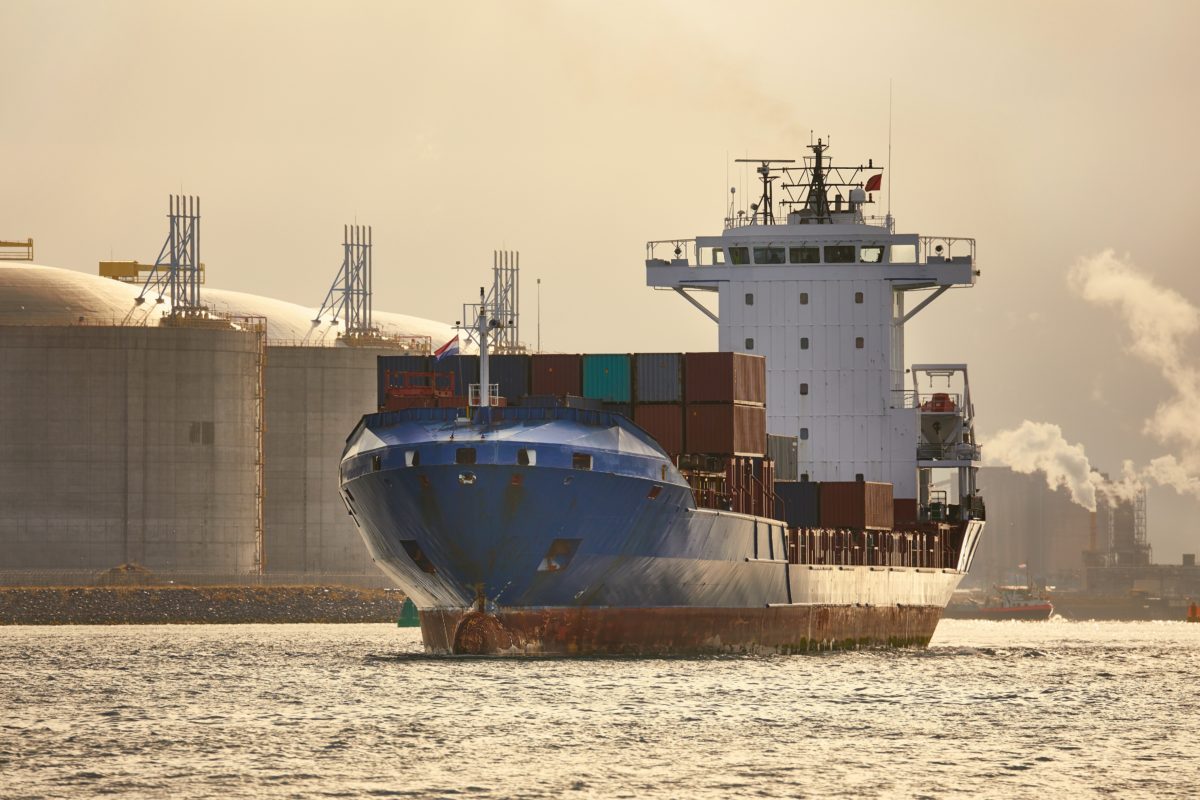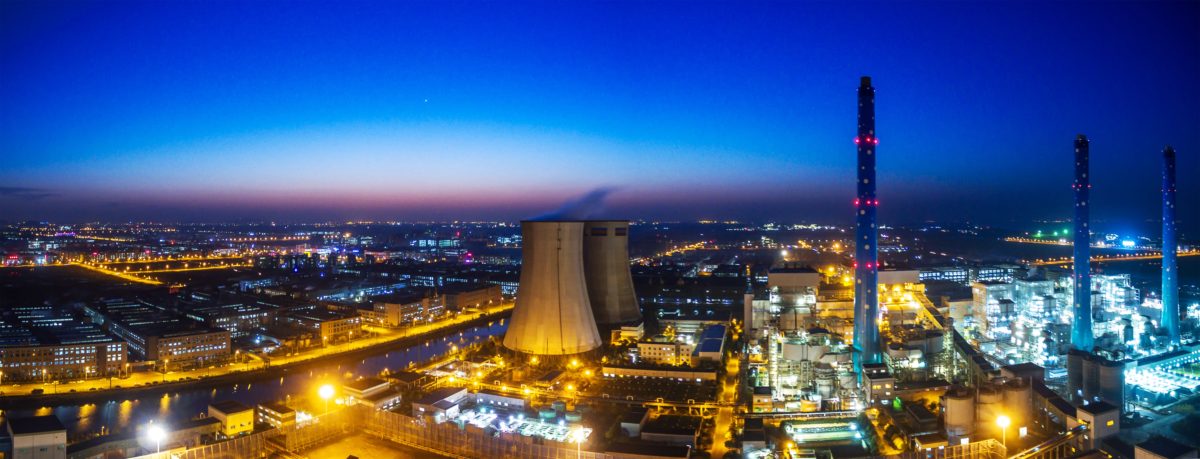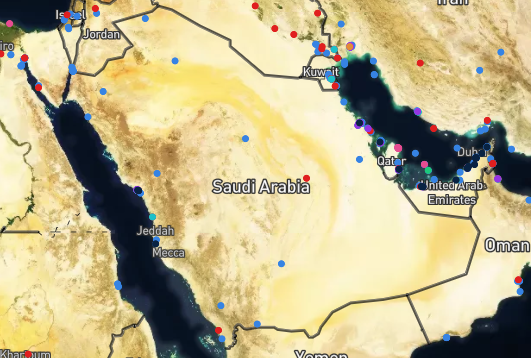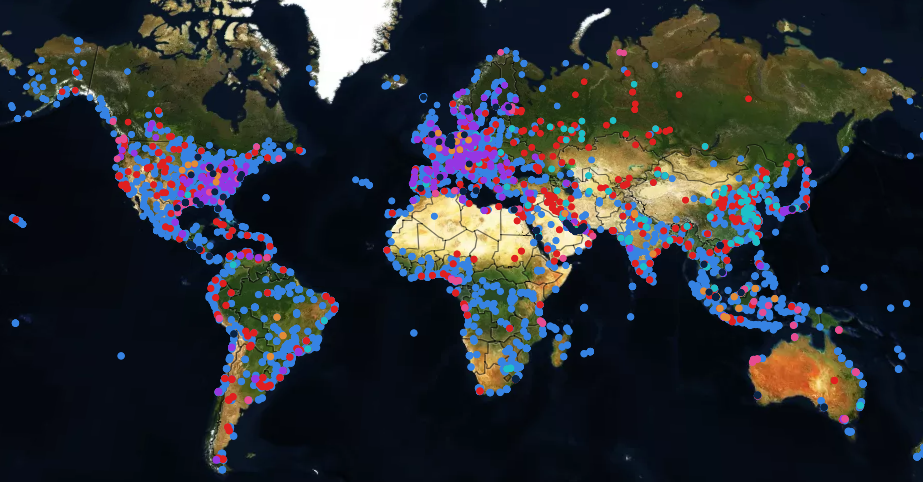No oil discovery narrative appears to have captured investor attention this year as much as Reconnaissance Africa’s (TSXV:RECO, OTC:RECAF) acquisition of the rights to Namibia’s giant, 6.3-million-acre Kavango Basin, which was followed in short order by two confirmations of an active petroleum system.
It’s captured our attention for several reasons; not the
least of which is that onshore discoveries are pretty much a thing of
the past, except in the final frontier of Africa, where Namibia—which
has never produced a barrel in its history—is anxiously awaiting the
possibility of its day in the energy spotlight.
It’s also captured
our attention because this is a junior explorer who is sitting on what
we think is a supermajor-size basin, and it’s fully-funded for its
current 3-test well drill campaign.
But in recent weeks, our
attention has been drawn by reports of surprise early results—twice. And
now, there is a lot to potentially look forward to in the coming days
and weeks.
On Monday last week, ReconAfrica announced that it had completed its second drill at its 6-1 stratigraphic test well. In a matter of days, we are expecting the results from that drill.
Expectations are high because not only did RECO show indications of an active petroleum system in its first test-well drill (6-2), but it also showed over 200 meters (over 660 feet) of oil and natural gas indicators over three discrete intervals in a stacked sequence of reservoir and source rock.
Expectations are also high because only
part way into the second drill (6-1), in the shallow section, RECO
again provided clear evidence of an active petroleum system, with 134
meters (440 feet) of light oil and gas shows.
Now, RECO is launching 2D seismic, and soon to release full drill results from (6-2)—the well that’s already delivered positive results in the shallow sections.
Everything Lines Up in RECO’s Favor
Everything appears to be lining up in RECO’s favor, from day one when they took the giant leap of faith to acquire the rights to this huge basin in Namibia, and then to add another huge section of the same basin in Botswana. That gave them a total of 8.5 million acres.
A huge boost of confidence came first from Bill Cathey, an industry recognized geologist for the biggest oil companies in the world, who performed the magnetic survey interpretation for RECO. Cathey came out saying that, “Nowhere in the world is there a sedimentary basin this deep that does not produce hydrocarbons.”
Then came Daniel Jarvie, a leading geochemist and source rock expert who is now all-in on RECO (TSXV:RECO, OTC:RECAF) … Jarvie estimated, conservatively, that the basin has generated billions of barrels of oil and gas. He liked what he saw—a lot—so joined the RECO team.
The company reports it has full government
support—local and national, and has been helping Namibia from the start,
from drilling water wells for Kavango residents who have limited access
to potable water, to helping to fund the country’s COVID-19 vaccine
rollout.
Short-Selling Desperation May Have Hit Fever Pitch
So,
now, with two confirmations of an active petroleum system under its
belt, new results expected just days away, 2D seismic having launched…
we think those who have taken on enormous short positions against RECO
are thoroughly desperate.
That desperation may have led to organized media campaigns against the company, in what we think is an attempt to bring the stock down enough to give them time to cover their shorts before there is no longer any way to stop the march forward in Namibia.
One of the most important breadcrumbs comes in the latest press
release from Monday, which tells us that both test wells, 6-2 and 6-1,
will have a VSP (vertical seismic profile tool) run through them,
connecting them along the same seismic line. And later this month, the
company says casing will be run and cemented to isolate the prospective
hydrocarbon bearing zones.
Investors who have no background in
geology might now be able to interpret this clearly, but for us, the
most important breadcrumb is this: ReconAfrica would never fund the
complex operation of running a VSP to tie these two wells together along
the same seismic line if there wasn’t a potential for something big
there—in both wells.
There are many catalysts here that stand to make the coming days very interesting for investors:
Now that the second drill has been completed, RECO (TSXV:RECO, OTC:RECAF) reports it is making multiple logging runs and that up to 50 sidewall cores will be taken to maximize potential hydrocarbon recovery. Once that is complete, the VSP is run as part of the 2D seismic program.
RECO (with its partner NAMCOR, the state oil company) received approval from the Namibian government on July 7th
for seismic and will begin acquisition of the initial 450 km 2D seismic
program across the Kavango basin any day. That will last for approx.
6-8 weeks.
There are so many things we expect news releases on in the coming days and weeks:
- Results from the second test well
- Results from the 450km 2D seismic
- The launch of the third test well drill, most likely after the seismic acquisition
- And
hopefully some potential JV farmout deals with the majors, who will no
doubt be watching like hawks for the next lab and 2D results—and that
could be one of the most exciting things for investors
Furthermore,
we think there is reason to be excited about 2D seismic results. So
does Polaris, Canada’s oldest seismic company contracted to do it:
Polaris
COO, Joe Little stated, “The acquisition plan is progressing very well
for a successful recording launch in mid July. Given our past success
with the environmentally friendly Explorer 860 source units on past
projects in Africa and given the very high resolution parameters
designed by ReconAfrica’s seismic team, we anticipate getting excellent
data results on the project.”
What has made an organized misinformation campaign so hard to manage
on the part of short sellers is the fact that RECO isn’t a fly-by-night
junior explorer and a lot of RECO’s online followers appear to be very
well informed and are keeping fellow investors up to date, which for a
short and distort campaign is a problem as they need uninformed
investors for their strategies to work:
It’s difficult for us to second-guess results and operations when some of the biggest names in the industry are involved, including the likes of giant Schlumberger, and Polaris. None of the companies involved in this operation would be willing to associate themselves with a fraudulent oil exploration play. And we think short sellers are having a hard time covering because RECO (TSXV:RECO, OTC:RECAF) has done everything by the book, with some of the best in the industry. There may be no other way to approach a basin of this size. This is not another Canadian micro-cap plopping itself down on a random piece of Alberta and pretending to drill while taking investor money. This is the big time, and it could end up being our last big onshore oil discovery—ever.
The next time you read a story like this, it will
probably be in the deep waters, where no junior company can travel
alone. Oil narratives like this are potentially once-in-a-lifetime, and
that’s precisely what may have short sellers so worried. They may have
ended up on the wrong side of exploration history.
Other oil companies worth keeping an eye on:
Schlumberger (NYSE:SLB) is
the world’s largest oilfield services company. The Schlumberger family
of companies operates between 120 countries and employs more than
100,000 people. They provide a wide range of exploration, production,
drilling and processing services to their customers to help them find
and produce hydrocarbons more efficiently from underground reservoirs.
Schlumberger has been around for almost 90 years now with its first
customer being Shell in 1928.
Schlumberger is transforming itself
to survive and thrive in an oilfield a fraction of the size it was only a
few years ago. The emphasis is shifting from throwing big chunks of
iron and a schoolyard full people at a project to minimizing capital
intensity of operations through the digital PSO transformation we have
discussed here. The digitalization of the global oilfield will prove to
be very sticky and begin to deliver subscription-type returns to both
companies.
SLB is ahead of the rest of the oilfield pack with
their New Energy Genvia venture, which aims to produce carbon free blue
hydrogen through a hydrogen-production technology venture in partnership
with the French Alternative Energies and Atomic Energy
Commission (CEA), and with Vinci Construction. This new venture will
accelerate the development and first industrial deployment of the CEA
high-temperature reversible solid oxide electrolyzer (SOE) technology.
Baker Hughes (NYSE:BKR)
is one of the world’s leading providers of oil and gas field services,
with operations in over 80 countries worldwide. They provide a wide
range of products and services to upstream companies around the globe
including drilling fluids, artificial lift systems, completion tools,
coiled tubing techniques and equipment for use in deepwater
environments. Baker Hughes has an extensive history as a pioneer in
developing new technology which has led to many innovations that have
helped shape the industry.
Baker Hughes is committed to helping
our customers succeed by providing them with state-of-the-art
technologies such as those that are designed to improve well
productivity while lowering environmental impact through sustainable
solutions.
Like many of its peers, Baker Hughes has also faced
mounting pressure to join the green revolution. And it’s risen to the
call-to-arms. Surprisingly, however, it wasn’t investor pressure that
got Baker Hughes into the hydrogen boon. In fact, it’s been in the game
for well over half a century. It built its first hydrogen compressor in
1962, and hasn’t stopped since.
Because it’s still primarily an
oil field service company, however, Baker Hughes has had its share of
ups and downs over the past year, but the $27 billion industry giant
still remains a smart buy for long-term investors. Not only has it shown
that it can adapt to the times, but it also pays dividends!
ConocoPhillips (NYSE:COP) a
multinational energy corporation with headquarters in Houston, Texas,
has been around since 1905. The company is active in the exploration and
production of crude oil and natural gas. ConocoPhillips operates its
own resources as well as those of others through ventures, joint
operations and production sharing agreements. They also have a
downstream business focused on refining and marketing products like
gasoline, diesel fuel, jet fuel and other petrochemical-based products
that are derived from crude oil refining processes.
ConocoPhillips,
as the largest pure upstream company, has performed relatively well in
this depressed market, generating ample free cash flow and returning a
good chunk of it to shareholders. Unlike many of its peers who
continued to expand aggressively during the shale boom, COP has taken
several steps to lower costs and fortify its balance sheet.
Thanks
to a global recovery in demand, Conoco has seen an increasingly bullish
look on the industry, and it was one of the few companies which did not
partake in the mass-layoffs seen in the industry last year. In
addition, Conoco has also seen a fairly decent about of insiders buying
into its stock, which is a good sign.
Chevron (NYSE:CVX) is
an American multinational energy corporation, and one of the world’s
largest oil companies. They have operations in more than 180 countries,
with headquarters located in San Ramon, California. Chevron has many
different brands that are marketed to consumers all over the world.
Chevron’s primary areas of business are exploration and production of
crude oil and natural gas, manufacturing and marketing petroleum
products, transportation fuels supply chain logistics services, power
generation solutions including renewable energy technologies like
geothermal power plants. The company also operates one of the world’s
largest marine fueling systems with locations across six continents.
Chevron
is also betting big on Africa, particularly Nigeria and Angola. The
supermajor ranks among the top oil producers in the two African nations.
Other areas on the continent where the company holds interests include
Benin, Ghana, the Republic of Congo and Togo. Chevron also holds a 36.7
percent interest in the West African Gas Pipeline Company Limited, which
supplies Nigerian natural gas to customers in the region.
In the last few decades, ExxonMobil (NYSE:XOM)
has been one of the most successful multinational corporations in
America. This is due to a number of factors, including their ability to
innovate and adapt. However, with climate change becoming an
increasingly pressing issue for our world, it’s unclear how much longer
this company will be able to thrive.
ExxonMobil isn’t ignoring the
reality of the market, however. It has made major moves in its
commitment to reduce its emissions. It claims to have about one-fifth of
the world’s total carbon capture capacity. The company captures about 7
million tons per year of carbon.
ExxonMobil is also big in its
commitment to reduce its emissions. It claims to have about one-fifth of
the world’s total carbon capture capacity. The company captures about 7
million tons per year of carbon. This has been in place since 1970, and
the company claims to have captured more CO2 than any other company —
more than 40 percent of cumulative CO2 captured.
The company, Enbridge Inc.(NYSE:ENB, TSX:ENB), is
a Canadian multinational energy company. Founded in 1949 by the World
War II veterans Kenneth W. Dam and Arnold R. Parry, it has since grown
to be one of North America’s largest pipeline companies with over 2
million miles of pipelines across Canada and the United States. They
also provide services for gas transmission, natural gas storage,
distribution as well as power generation and electricity retailing. They
have more than 150 years combined experience in developing energy
infrastructure that provides Canadians with affordable energy that they
can rely on to heat their homes during long winter months or cool them
down during hot summer days.
Enbridge is in a unique position as
oil and gas stages its 2021 comeback. As one of the more potentially
undervalued companies in the sector, it could be set to win big this
year. But that’s only if it can overcome some of the challenges in its
path. Most specifically, its Line 3 project which has faced scrutiny
from environmentalists.
Canadian Natural Resources (NYSE:CNQ, TSX:CNQ) is
one of the biggest names in the Canadian energy sector with operations
spanning across North America and Western Europe. The company has been
around since 2010 but has had roots dating back to 1952 when Panarctic
Oils was founded by Harold Lothrop, Kenneth Lothrop (Harold’s father),
and two other partners.
Like Enbridge, Canadian Natural Resources
has struggled through the pandemic, but the companyhas been able to do
what many of its Canadian counterparts haven’t been able to, keep its
dividend intact after swinging to a loss for the first half of the COVID
pandemic, while Canada’s producers are scaling back production by
around 1 million bpd amid low oil prices and demand. Though Canadian
Natural Resources kept its dividend, it withdrew its production guidance
for 2020, however. It also said it would curtail some production at
high-cost conventional projects in North America and oil sands
operations and carry out planned turnaround activities at oil sands
projects in the second half of 2021.
Suncor Energy (NYSE:SU, TSX:SU) is an energy company
that has a strong focus on sustainability. They work hard to ensure
their products are safe, reliable, and sustainable. With the industry
changing so rapidly in recent years- being able to keep up with change
is key for success. Suncor has always been a leader in this area of
innovation and it will continue forward as such- keeping all
stakeholders happy!
Suncor is a Canadian oil and gas company that
has been in business for over 75 years. They are one of the largest
producers of crude oil, synthetic crude oil, natural gas liquids (NGLs),
and petrochemicals in Canada. Suncor’s operations include exploration
and production from more than 100 fields located across Alberta, Canada,
as well as refining and marketing activities in North America.
Finally,
now that oil prices are finally on the rise once again, giants like
Suncor looking to capitalize. While many of the oil majors have given up
on oil sands production – those who focus on technological advancements
in the area have a great long-term outlook. And that upside is further
amplified by the fact that it is currently looking particularly
under-valued compared to its peers, especially as lithium, which is
present in Canada’s oil sands, becomes an even more desirable commodity.
TC Energy Corporation (TSX:TRP) is
a Calgary-based energy giant. The company owns and operates energy
infrastructure throughout North America. TC Energy is one of the
continent’s largest providers of gas storage and owns and has interests
in approximately 11,800 megawatts of power generation. It’s also one of
the continent’s most important pipeline operators. With TC Energy’s
massive influence throughout North America, it is no wonder that the
company is among one of Canada’s strongest and well-known companies.
Like
a number of its peers, one of TC Energy’s biggest challenges in recent
years was grappling with the particularly difficult approval process for
its Keystone Pipeline. But that’s all history now, and with the bounce
back in oil and gas demand, TC Energy could stand to benefit. While TC
Energy’s stock price has yet to recover from pre-pandemic levels, it is
one of the few industry giants which has managed to keep high dividends
rolling in.
Westshore Terminals (TSX:WTE) is a
coal export terminal located at Roberts Bank Superport in Delta British
Columbia. It is Canada’s largest coal export facility, surpassing the
combined coal shipments of all other terminals in Canada. The company
exports thermal and metallurgical coals to markets around the world,
including Japan, South Korea, China, India and Taiwan. Westshore also
offers services to ship various bulk cargoes through its marine
facilities. Westshore Terminals has been operating for over 30 years and
employs more than 240 employees that work 24/7 shifts to ensure
continuous operation. Despite its success and longevity, however, is
increasingly being targeted by short sellers.
Short sellers are
looking at companies like Westshore Terminals based on a simple fact:
they’re in the coal business. While the fossil fuel industry isn’t quite
down for the count just yet, coal is seeing a major decline that isn’t
likely to slow anytime soon. And without a significant pivot,
Westshore’s days could be numbered.
Great-West Lifeco (TSX:GWO)
continues to be a popular stock among short sellers on the TSX. This
North American and European financial services holding company has seen
its shares drop 8.9% year over year yet it still attracts interest from
investors globally due to its healthy balance sheet, strong cash flows,
and more.
Is the short interest justified? Their record as
dividend payers is very strong: Great West has been paying out an
average annualized return on investment (ROI) for stockholders since
1948 that currently sits just below 7%. It also offers a quarterly
dividend yield with dividends paid every three months which equals about
6%, or more than five times what most people can expect to earn through
investing in savings accounts today. This could emerge as a huge
incentive to fight off the short sellers and keep the stock afloat for
many loyal investors.
Pembina Pipeline Corp. (TSX:PPL)
is a company that has been around for more than 50 years and was the
first pipeline company in Canada to offer gas transmission services.
They are now one of the largest natural gas transmission companies in
North America with an annual throughput capacity of almost 66 billion
cubic feet per day.
Pembina Pipeline Corporation is a Canadian
energy infrastructure business that provides products such as natural
gas, oil, renewable power, and chemicals to customers primarily located
on the eastern coast of North America from its operations in Alberta,
British Columbia, Ontario and Quebec.
MEG Energy Corp (TSX:MEG)
is a Canadian energy company that provides natural gas and renewable
power products and services to customers in Canada, the United States,
Europe, and Asia. The company operates in three segments: Pipeline
Services; Power Generation Services; Renewable Power Production. MEG has
been able to grow their pipeline business by engaging with key
stakeholders on regulatory fronts across North America as well as
through expansion of their existing pipeline network.
The company’s large proven resources and their cutting-edge technology make MEG a promising company for investors looking to get in to the promising oil sands in Alberta.
OilPrice, by James Stafford, July 23, 2021


